Getting slowly caught up on the mowing. Still more rain today though, so at a standstill again.
We got the crop area down to a level 3. We also pulled all the weeds and still need to have enough dry time to spray.
Before:
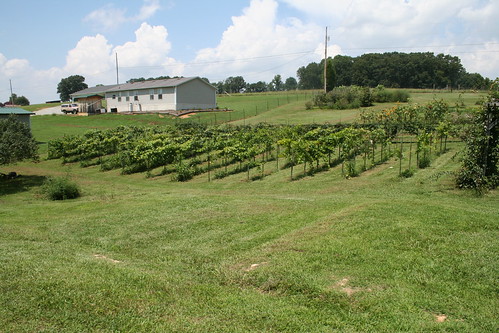
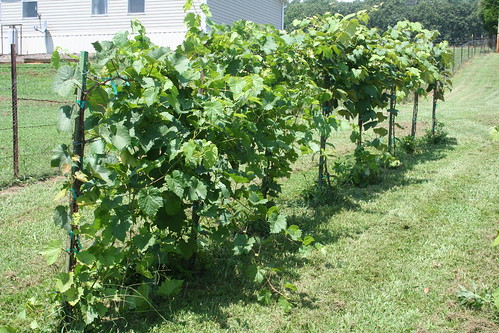
During (I was working too, but stopped to take photos.):
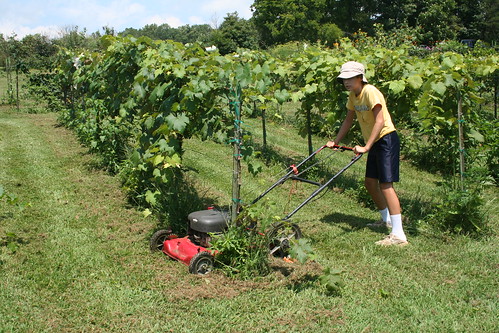
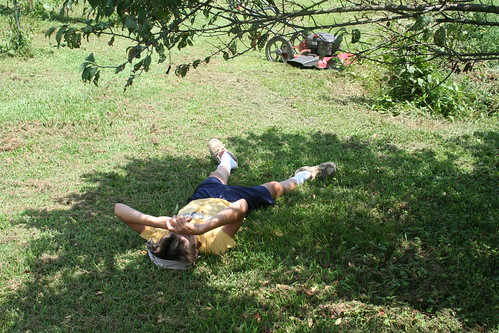
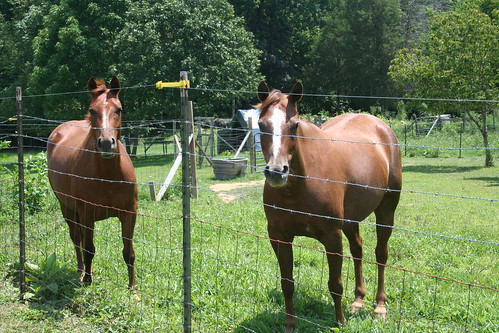
And After:
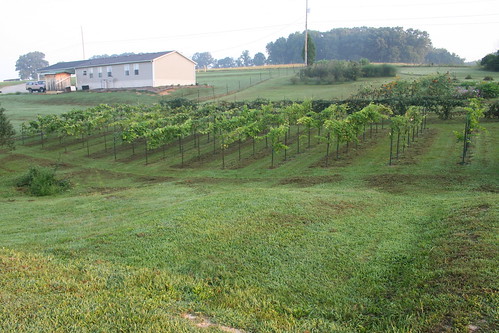
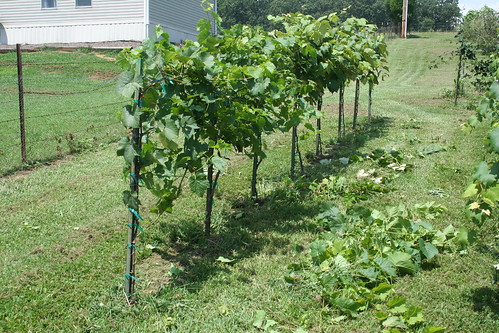
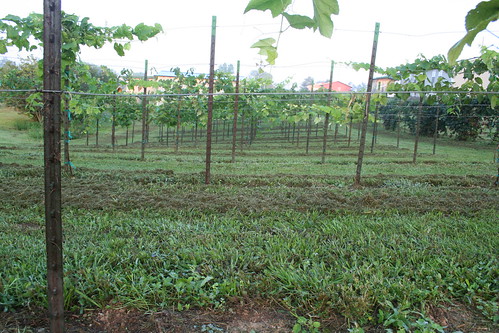
SINK HOLES
This hole is about 5 feet across. We let the weeds grow on the edges and down as far as they can to try to hold the earth. I have no idea how deep these holes go. There are several of them.
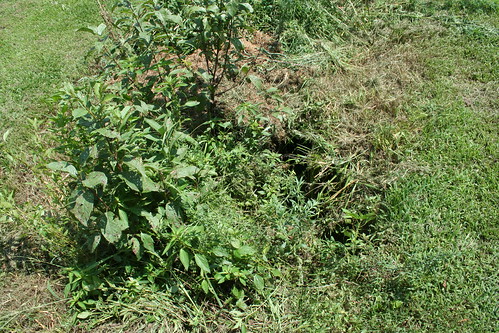
--------
I believe the garden is dying. Just as we were about to begin to harvest all our hard-won produce.
All over this area gardens are succumbing to Fusarium Wilt. That's a fungus that thrives in hot, damp summers. The garden was struggling for the last few weeks, but still going OK. However, last week we got 3.5 inches of rain and then went into the 90's during the day.
It was at that time that the whole thing just died. About 100 melons, all gone. They are rotting on the vines before even getting ripe. Same with most of the rest of the produce. We pretty much realized this about 2 or4 3 days ago, but didn't know what was going on.
It was a lot of work. We are fighting disappointment, but know that each year is another learning experience.
Here are some pictures that I took this morning...
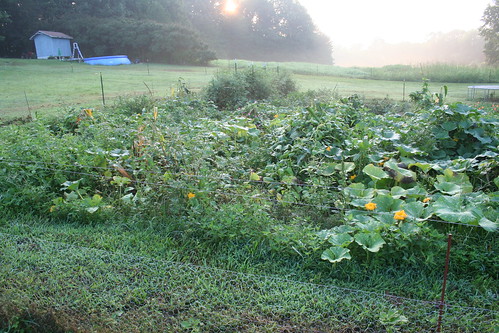
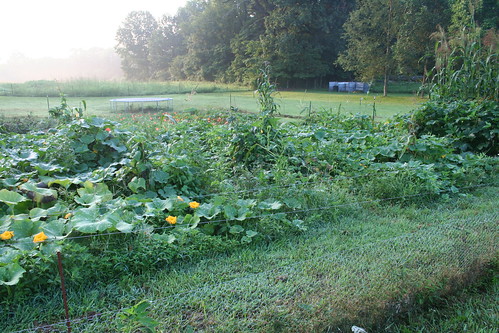
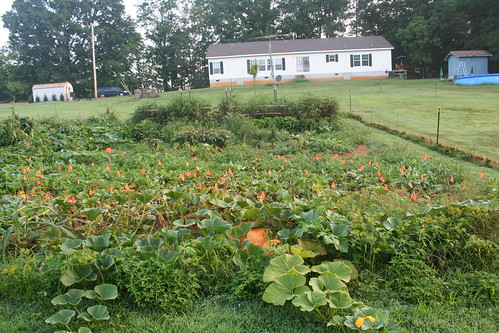
Even our giant pumpkin is rotting. We need to go down there just as soon as the rain stops in a little bit, and pull it out to give it a measurement.
There is no cure. There are things we can do to lessen the chances of total crop loss in the future. None are guaranteed, but we will try to implement as many as we can.
*Raised beds - to lower moisture if heavy rains occur again.
*Drip irrigation - to support those raised beds.
*Rip out and burn all vegetation in garden - to cut down on fungal spores.
*Solarize soil with black tarp - 3 months in hot sun, reduces spores somewhat.
*Do not use fertilizers with urea - urea promotes fungal growth.
*Choose "wilt resistant" varieties - sadly most heirlooms are not.
*Use mulch - keeps soil slightly cooler.
*Use Trichoderma harzianum strain T-22 (AKA RootShield) - a beneficial fungus that binds to plant roots and protects them from aggressive fungi; a best hedge.
Signs of Fusarium wilt in your garden:
Are your plant's leaves wilting during the heat of the day, then recovering when cool? Are the leaves beginning to turn yellow? Do they look like they lack water, but you know you've been watering?
http://www.ces.ncsu.edu/fletcher/programs/tomato/diseases/fusarium_wilt_race_3_Polk_1.jpg
http://ipmnet.org/plant-disease/plant_images/TomatoFusariumWilt.jpg
You may be battling Fusarium Wilt. The fungi sets up housekeeping in the water channels of your plant, eventually blocking them so that the plant actually is not receiving the water the roots are attempting to send. The plant dies, a portion at a time, but it happens rather rapidly.
Cut open a branch and look for tell-tale signs of dark brown streaks going up the channels of your plant. You can sometimes see them on the outside of the branches. If you cut them open, you will see brown spots around the perimeter of the branch.
http://www.omafra.gov.on.ca/IPM/images/cucurbit/diseases/fusarium-wilt/confused_fusarium-droughtstress_zoom.jpg
http://www.coopext.colostate.edu/4dmg/images/wilt2.jpg
----------------------------
On a happier note, here are soon-to-be additions to our herb garden!
A catnip plant. I was afraid the cat would attack it, but she did not. I like the fragrance.
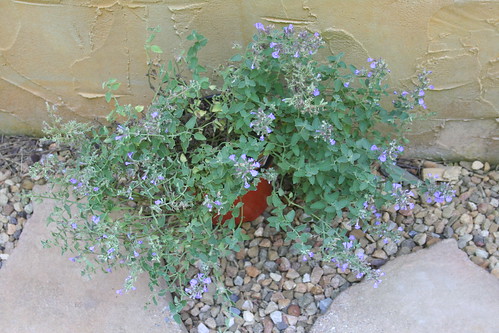
A salvia, three lavenders, a sorrel, a hyssop, and a feverfew.
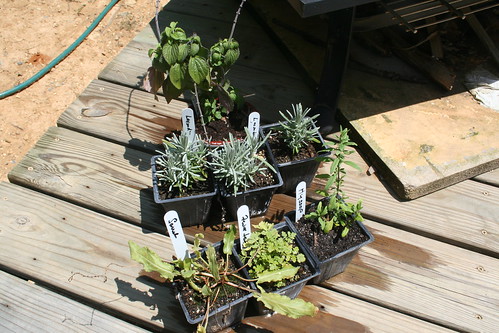
As I was mowing yesterday, I began noticing several herbs I'd not paid attention to before, just growing wild. Red Clover, which is actually pink. Comfrey, seems to be everywhere. :)
~Faith
.
OH! That is so discouraging! Darn it! Phooey!
ReplyDeleteIt was looking very beautiful and the hard work....goodness the hard work.
Still your other stuff is looking real nice.
Linda
http://coloradofarmlife.wordpress.com
oh, Faith, so sorry to hear about the fusarium wilt. Our melons have been splitting open on the vine. Your vineyard looks great! I'm sure it's a lot of work, but hopefully it will be paying off. Reminds me of Germany. Beautiful vineyards!
ReplyDeleteFaith, that is terrible news! Your garden looks too healthy to have something wrong with it!
ReplyDeleteIs that a regional fungus or can it occur wherever there is excessive rainfall coupled with extreme heat?
Hang in there! :-)
R Dean
Linda,
ReplyDeleteYeah, it's all the time that went into this produce. We really wanted to provide food for ourselves all winter.
But, all things will work out for good somehow. So we will just wait and see what that will be. :)
~Faith
Jo,
ReplyDeleteSame here, the melons and tomatoes, they have all been splitting for several weeks. Just so much rain.
I love vineyards too. I spent most of my growing up years in wine country, and I'm sure that has influenced me to have a little vineyard of my own. I love how the grapes look, all in rows.
~Faith
Dean,
ReplyDeleteI took some closer shots that I will post today, showing more detail of what is going on in there.
Some of it may survive, we are just sort of watching it. But we are scheduled for more rain all week.
That fungus can occur anywhere, but of course, the south is the most prone, with moisture and heat combined. I remember seeing the beginning symptoms in CA, but I never saw it develop to the extent that this has. So the drier environment held it at bay.
~Faith